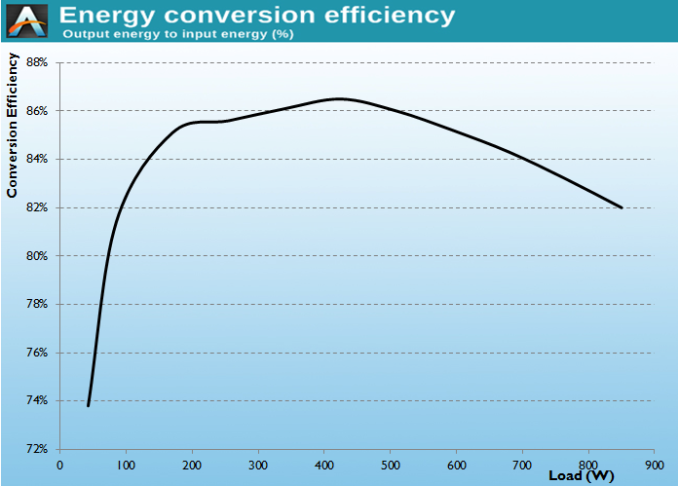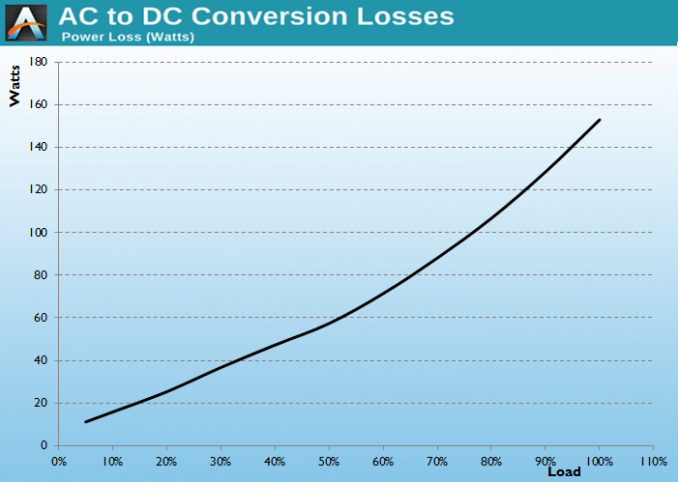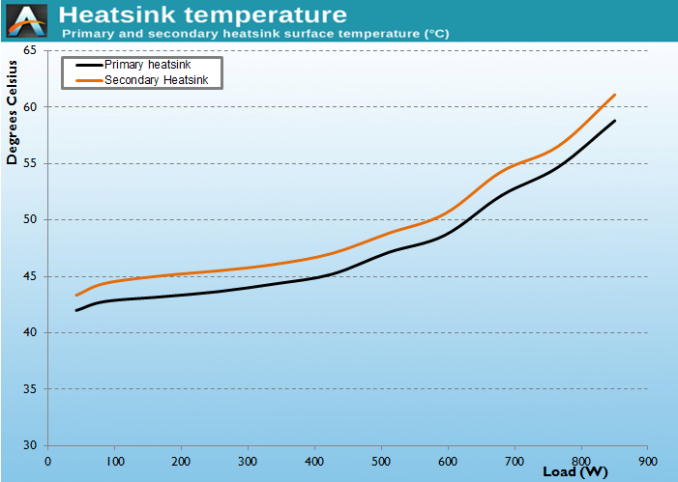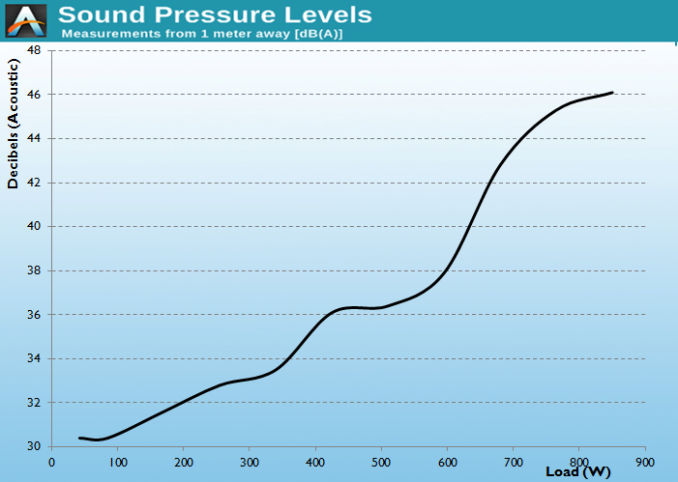The Rosewill Hive 850W PSU Review
by E. Fylladitakis on July 28, 2015 9:00 AM EST- Posted in
- PSUs
- Cases/Cooling/PSUs
- Rosewill
- 850W
Cold Test Results
For the testing of PSUs, we are using high precision electronic loads with a maximum power draw of 2700 Watts, a Rigol DS5042M 40 MHz oscilloscope, an Extech 380803 power analyzer, two high precision UNI-T UT-325 digital thermometers, an Extech HD600 SPL meter, a self-designed hotbox and various other bits and parts. For a thorough explanation of our testing methodology and more details on our equipment, please refer to our How We Test PSUs - 2014 Pipeline post.
The Rosewill Hive 850W displays very high efficiency levels under low to medium loading. It would very easily receive a better efficiency certification as well if not for the sharp efficiency drop above an output of 500 Watts. It manages an average efficiency within the nominal load range (20% to 100% of the unit's capacity) of 84.9% and a maximum of 86.5% when operating at exactly 50% load. However, the efficiency drops significantly at high loads, dropping all the way down to 82% at 100% load, preventing the platform from reaching higher efficiency certifications.
Due to the significant efficiency degradation at higher loads, the Hive 850W PSU displays a highly uneven temperature increase across the load range. It is rather cool and quiet at low to medium loads, with the fan maintaining very comfortable noise levels. However as the load increases, the lower efficiency generates heavy thermal losses and the speed of the fan increases rather abruptly, reaching what I feel are aggravating noise levels if the PSU is operating near its maximum capacity.















24 Comments
View All Comments
ImSpartacus - Tuesday, July 28, 2015 - link
As a layman, this was a cool review to read. It's often hard to figure out exactly what makes one psu different from another with similar marketing "specs". It's assumed that many are based on a handful of oem's designs, but it can be a challenge to dig that deep. This review presents much of that info up front. No digging necessary. Cool beans.Stuka87 - Tuesday, July 28, 2015 - link
The 12V rail sag is a bit more than I would like. And the fact that its only rated for 40C is really a bummer. Its very common for the inside of a PC case to hit 45-50C, especially in the summer with a few GPU's inside it. Some cases do let you put the PUS in upside down so it sucks in cool air (my own does) but many do not.MamiyaOtaru - Wednesday, July 29, 2015 - link
cases that don't put the PSU at the bottom are an anachronism IMHOAndrewJacksonZA - Tuesday, July 28, 2015 - link
Were these tests done at 110V or 220V?E.Fyll - Tuesday, July 28, 2015 - link
230V/50Hz. It is noted in the pipeline that includes the details of all the equipment and procedures.piasabird - Tuesday, July 28, 2015 - link
How do you know what this means unless you have a few other power supplies as a baseline to draw a comparison. For instance if you had what you considered is the best test results for a power supply, and one or two other the test results might make more sense. You always show comparisons for processors and video cards.Oxford Guy - Wednesday, July 29, 2015 - link
An entire article just for one PSU?doggface - Wednesday, July 29, 2015 - link
Have you been here before. They do this all the time???Oxford Guy - Wednesday, July 29, 2015 - link
It's one thing for a little site to devote an entire article to a bronze PSU and another thing for a big one to do so.Quake - Monday, August 3, 2015 - link
Eh... Anandtech was founded in 1997 and it's one of the biggest enthusiast website. https://en.m.wikipedia.org/wiki/AnandTech